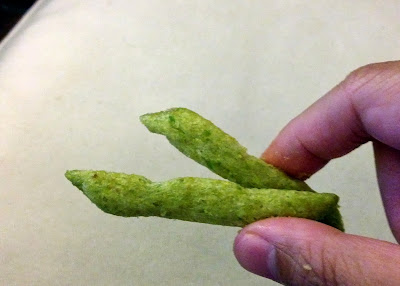Hot dogs do not make for the healthiest meal. They're filled with a lot of random crap and are also really high in sodium. We usually buy chicken or turkey hot dogs but they're still not that great, unless you get the nitrate/nitrite-free ones which are much more expensive. But we like hot dogs and we have a lot of canned baked beans (from the days when we had far less time and made less from-scratch meals), so I thought maybe veggie hot dogs might be a healthier way to go.
Since I forgot to take a picture of our package, here's the source
I hoped these Lightlife Smart Dogs would be the answer. When we broke open the package, there was a pretty strong smoky aroma, so I thought these would be flavorful. Once we were done boiling them, we tried them, and they had such a spongy texture. Nothing like real hot dogs. They also had this really odd flavor that we can't quite describe. We dumped the pieces into our baked beans (our non-vegetarian baked beans that had brown sugar and bacon in them) and let them stew on the stove for a bit, but they were still terrible and tasted weird. Only adding a plentiful amount of mustard helped mask the odd flavor.
Veggie hot dog pieces and baked beans
Reading over some reviews, it appears that some people do like these Smart Dogs, and that they don't boil them like we did. We boil all of our hot dogs when we make them for a quick dinner, so we figured these would be the same. Apparently they're better grilled, or pan fried, or loaded with lots of seasonings and/or toppings, so they pick up the flavor of whatever they're cooked or served in. However, even doing that, I can't imagine that these are even close to the same as meat hot dogs (even chicken or turkey). I appreciate that someone is trying to make healthier vegetarian hot dogs, but I don't think we'll be getting these again.


















































